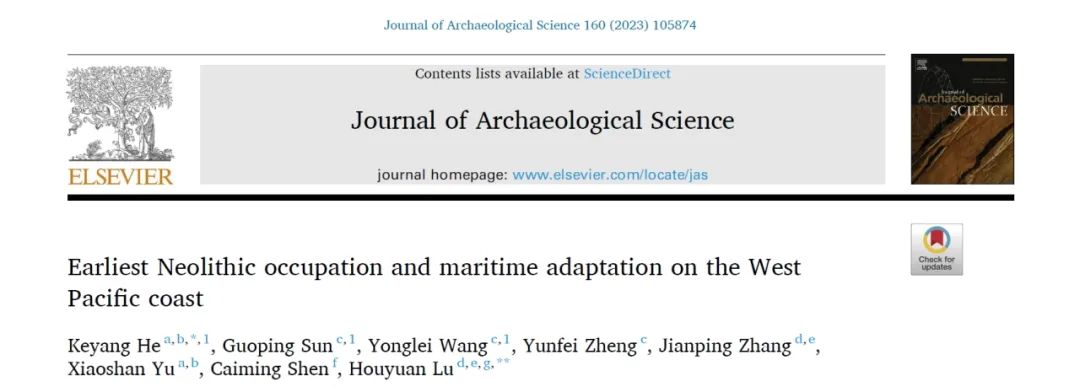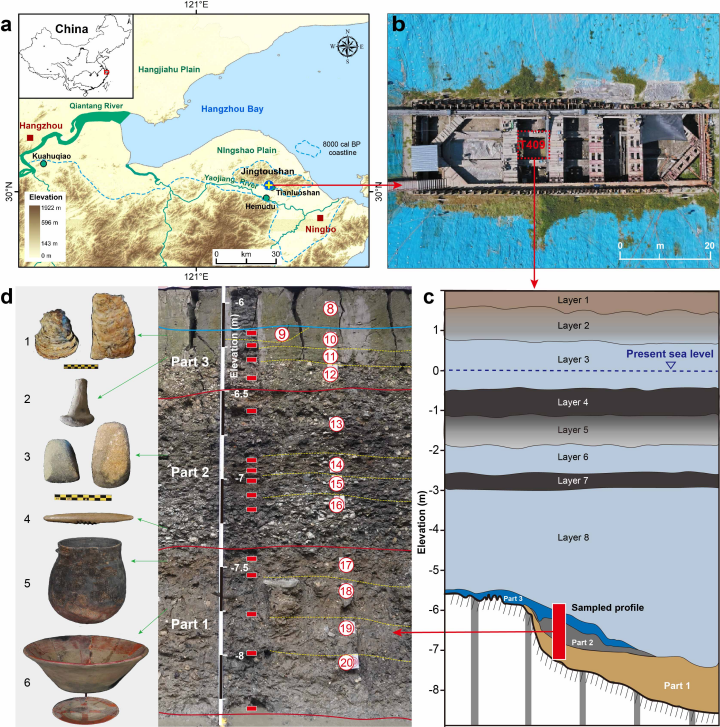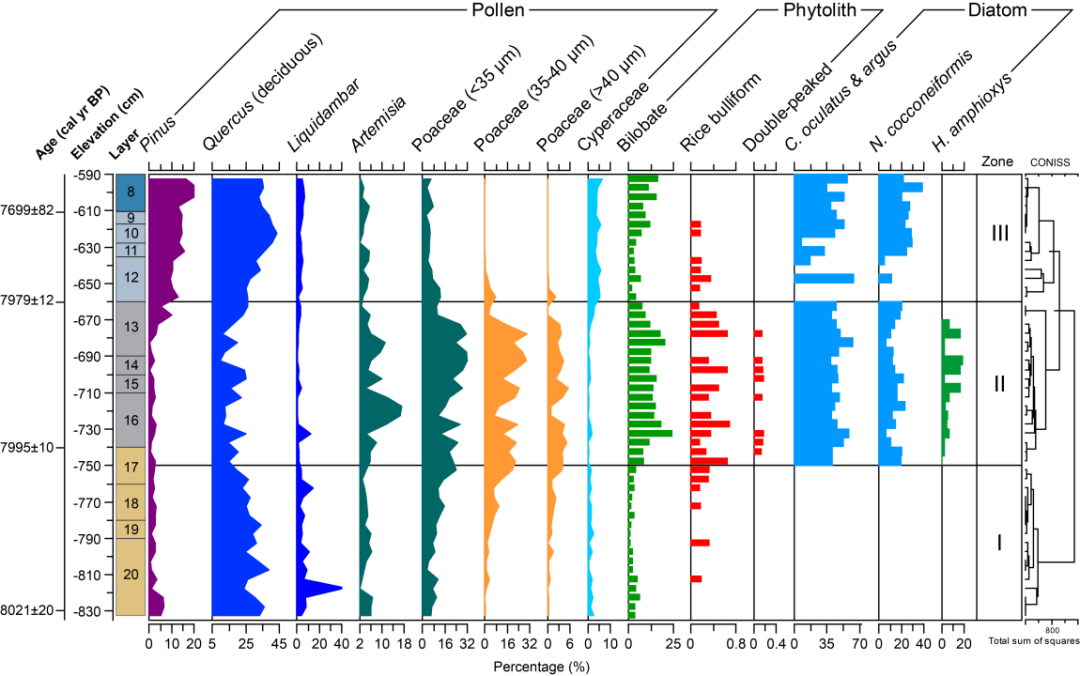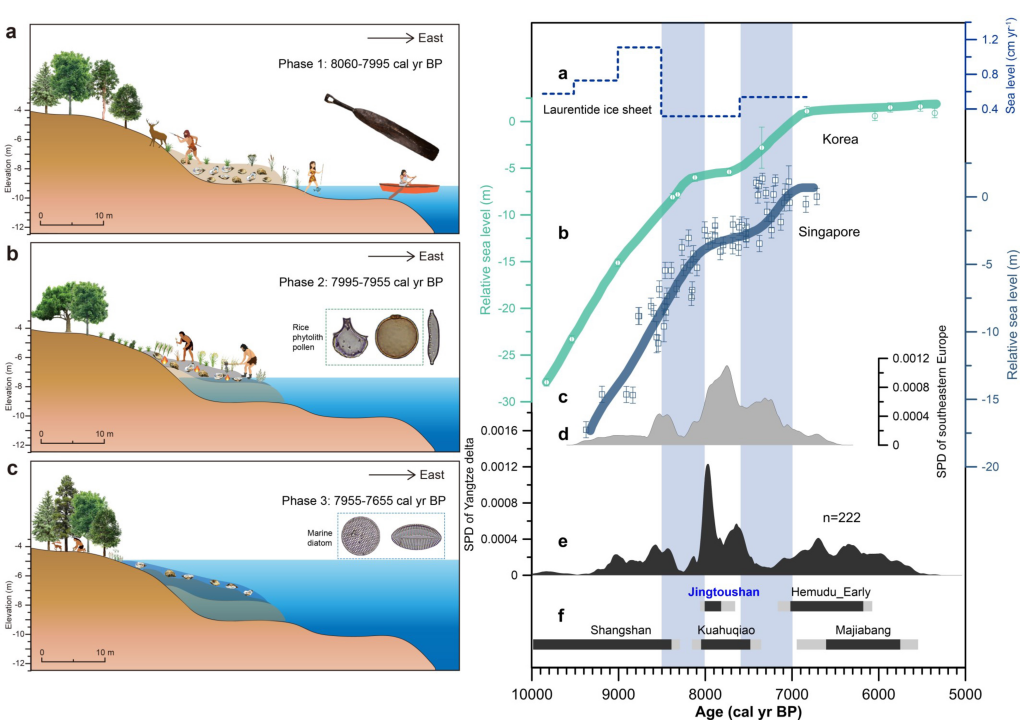The environmental archaeology team published "The earliest Neolithic settlement and marine adaptation on the western Pacific coast" in an international journal.

Recently, HE Keyang, a specially appointed associate researcher at the Geochronology Archaeology Laboratory of the Center for Archaeological Science, Sichuan University, published an article entitled 'Earliest Neolithic occupation and maritime adaptation on the West Pacific coast' in the international journal *Journal of Archaeological Science*. HE Keyang, associate researcher at the Center for Archaeological Science, is the first author and corresponding author. LU Houyuan, researcher at the Institute of Geology and Geophysics, Chinese Academy of Sciences, is the co-corresponding author, and SUN Guoping, researcher, and WANG Yonglei, curator at the Zhejiang Provincial Institute of Cultural Relics and Archaeology, are the co-first authors. This research was primarily funded by the major project of the Interdisciplinary Science Department of the National Natural Science Foundation of China, 'Coastal Zone Environmental Change and Cultural and Civilizational Evolution' (T2192950).

Figure 1: Location and stratigraphic accumulation of the Jingtoushan site
Maritime adaptation, including a series of human behaviors such as shellfish utilization, tool manufacturing, and maritime navigation, plays an important role in the dispersal of modern humans and the transformation of subsistence patterns. Since the Last Glacial Termination, influenced by the sea-level rise that submerged coastal areas, maritime adaptation has intensified worldwide and is generally believed to have begun about 7,000 years ago, marked by the large-scale appearance of shell midden sites. Through cooperation with the Zhejiang Provincial Institute of Cultural Relics and Archaeology, this study conducted detailed chronology, sedimentology, and microfossil analysis (pollen, phytoliths, diatoms) (Figure 2) at the Jingtoushan site in Yuyao, Zhejiang (Figure 1). The study confirms that the Jingtoushan site is a primary deposit of human activity on the coast. It not only advances the start time of enhanced marine adaptation to 8,000 years ago but also provides a new perspective for future underwater archaeological work and the study of prehistoric human-environment relationships in coastal areas.

Figure 2: Microfossil assemblages of pollen, phytoliths, and diatoms at the Jingtoushan site
The Jingtoushan site is located on the Ning-Shao Plain on the southern shore of Hangzhou Bay, with cultural layers deeply buried about 8 m below the modern sea level. It is the deepest buried coastal shell midden site in coastal China and the first shell midden site in the Yangtze River Delta region. Based on detailed Bayesian age analysis, this study determined the age of the cultural deposits from phases one to three of the Jingtoushan site to be ~8060鈥�7655 cal yr BP. Comprehensive microfossil evidence such as pollen and phytoliths reveals that, along with the continuous utilization of marine shellfish resources, there was an enhanced phenomenon of rice cultivation in phase two of the Jingtoushan site (Figure 2). The regional sea level, reconstructed based on diatom and sedimentological evidence, rose from about -8.3 to about -6.1 m.a.s.l, corresponding to a window of slowed sea-level rise in the early Holocene. Enhanced marine adaptation also appeared in a series of sites in Japan, Denmark, the United Kingdom, and other places during the same period. Before and after this period of relative sea-level stability were the last two sea-level jump events in the early Holocene (~8400 and ~7600 cal yr BP), corresponding to the great flood in southeastern Europe and the population decline and cultural discontinuity in the lower reaches of the Yangtze River (Figure 3).

Figure 3: Ecological environment evolution and early Holocene sea-level change at the Jingtoushan site
